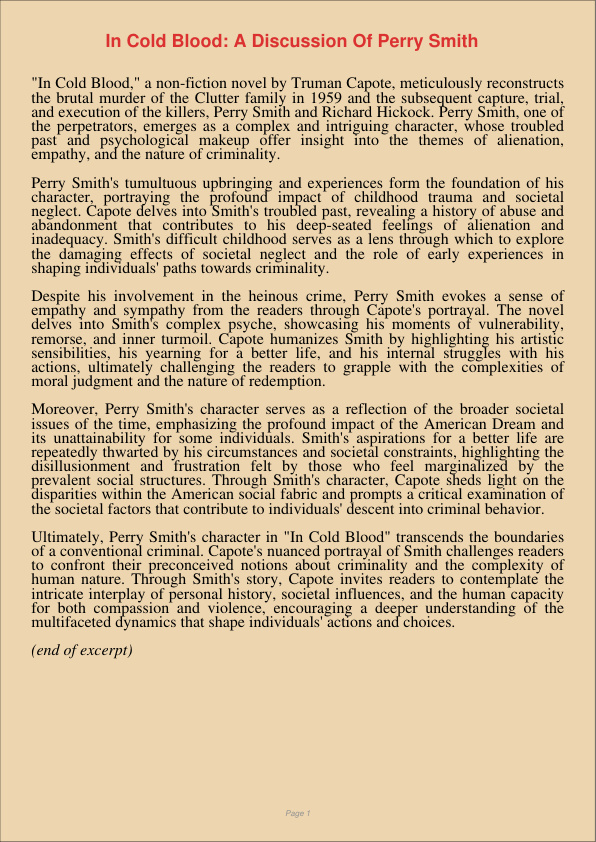In Cold Blood A Discussion Of Perry Smith
Jan 6, 2024
perry smith
cold blood
English
Health Sciences & Medicine

“In Cold Blood,” a non-fiction novel by Truman Capote, meticulously reconstructs the brutal murder of the Clutter family in 1959 and the subsequent capture, trial, and execution of the killers, Perry Smith and Richard Hickock. Perry Smith, one of the perpetrators, emerges as a complex and intriguing character, whose troubled past and psychological makeup offer insight into the themes of alienation, empathy, and the nature of criminality.
Perry Smith’s tumultuous upbringing and experiences form the foundation of his character, portraying the profound impact of childhood trauma and societal neglect. Capote delves into Smith’s troubled past, revealing a history of abuse and abandonment that contributes to his deep-seated feelings of alienation and inadequacy. Smith’s difficult childhood serves as a lens through which to explore the damaging effects of societal neglect and the role of early experiences in shaping individuals’ paths towards criminality.
Despite his involvement in the heinous crime, Perry Smith evokes a sense of empathy and sympathy from the readers through Capote’s portrayal. The novel delves into Smith’s complex psyche, showcasing his moments of vulnerability, remorse, and inner turmoil. Capote humanizes Smith by highlighting his artistic sensibilities, his yearning for a better life, and his internal struggles with his actions, ultimately challenging the readers to grapple with the complexities of moral judgment and the nature of redemption.
Moreover, Perry Smith’s character serves as a reflection of the broader societal issues of the time, emphasizing the profound impact of the American Dream and its unattainability for some individuals. Smith’s aspirations for a better life are repeatedly thwarted by his circumstances and societal constraints, highlighting the disillusionment and frustration felt by those who feel marginalized by the prevalent social structures. Through Smith’s character, Capote sheds light on the disparities within the American social fabric and prompts a critical examination of the societal factors that contribute to individuals’ descent into criminal behavior.
Ultimately, Perry Smith’s character in “In Cold Blood” transcends the boundaries of a conventional criminal. Capote’s nuanced portrayal of Smith challenges readers to confront their preconceived notions about criminality and the complexity of human nature. Through Smith’s story, Capote invites readers to contemplate the intricate interplay of personal history, societal influences, and the human capacity for both compassion and violence, encouraging a deeper understanding of the multifaceted dynamics that shape individuals’ actions and choices.